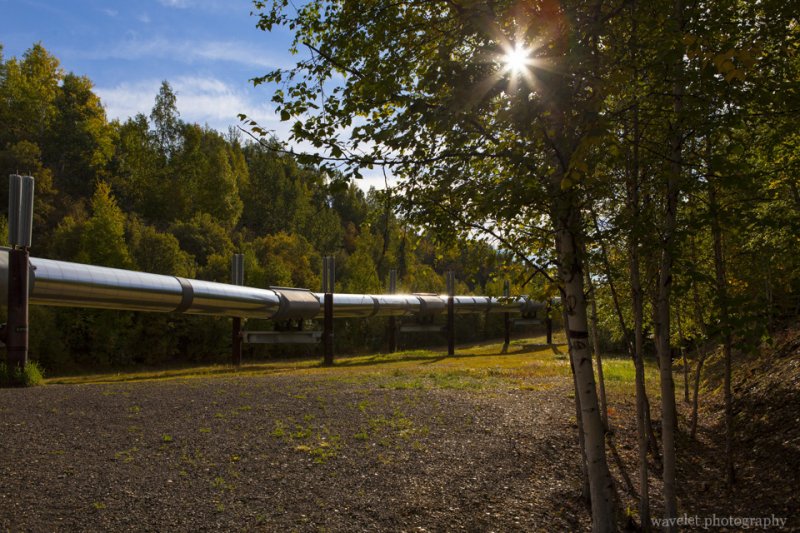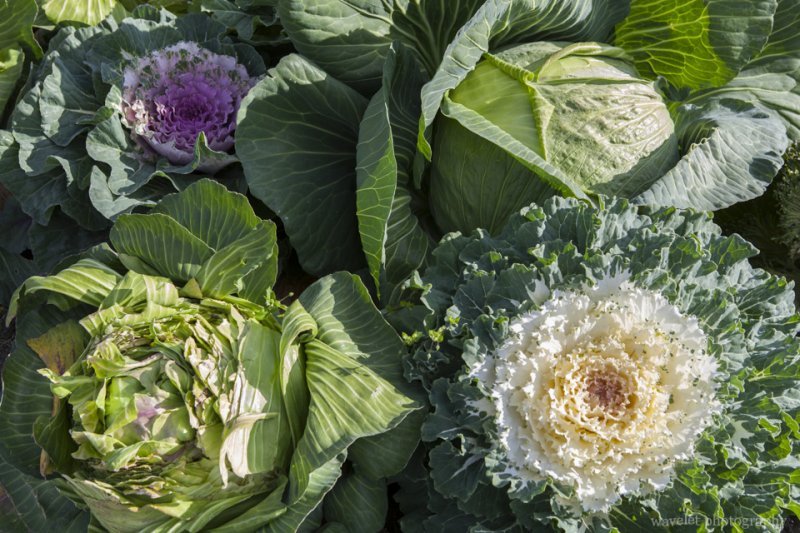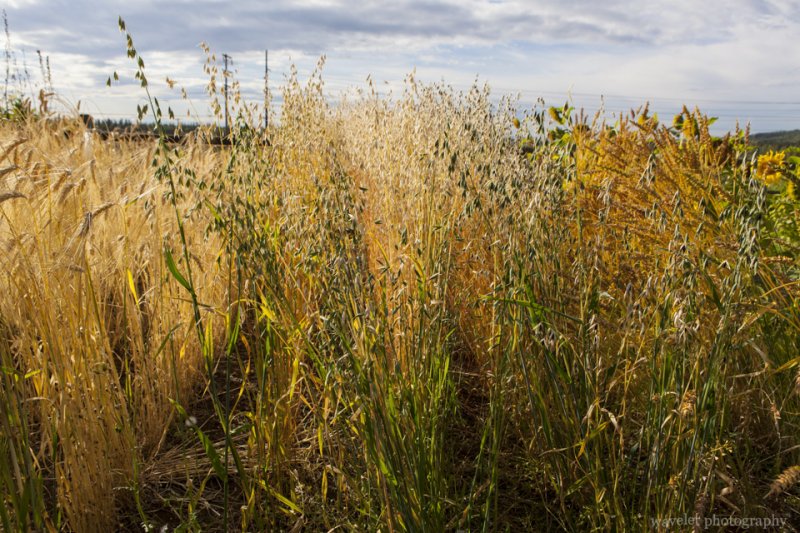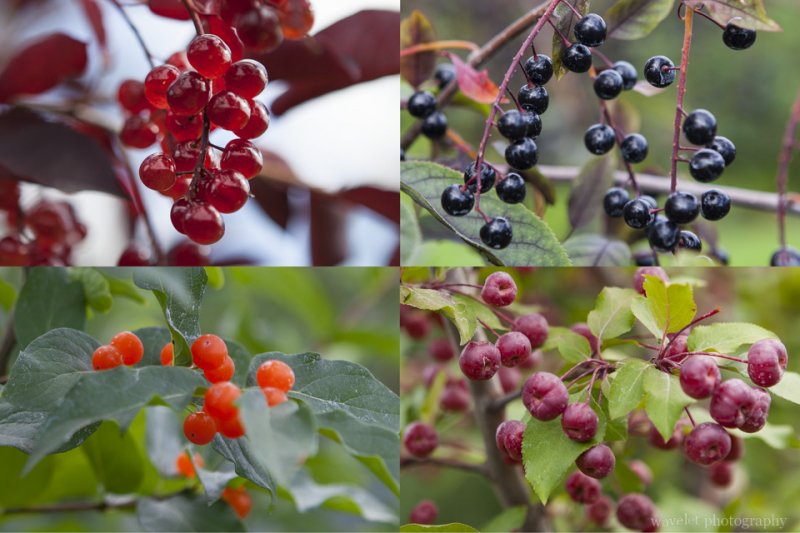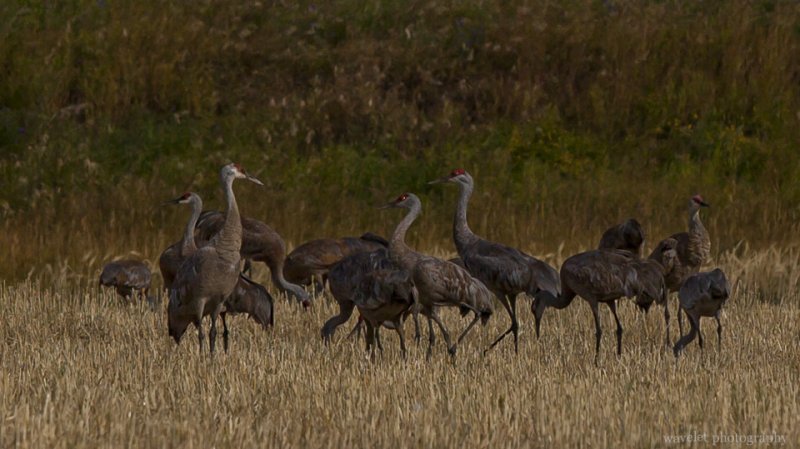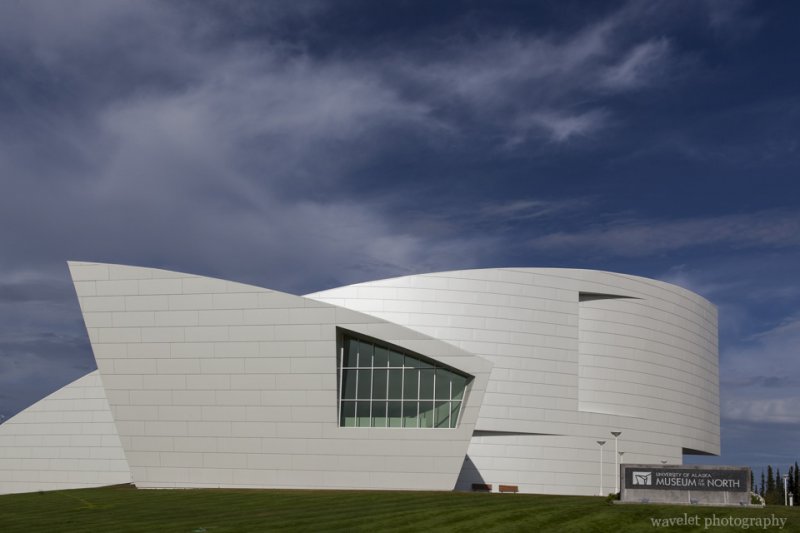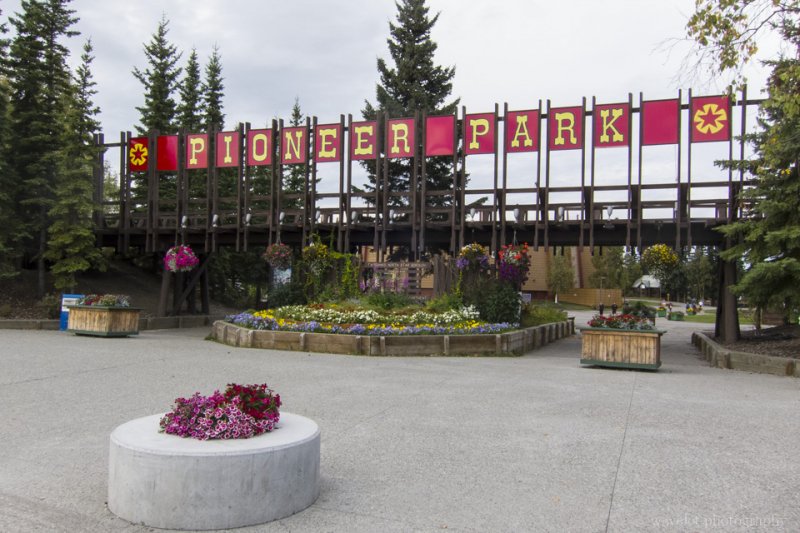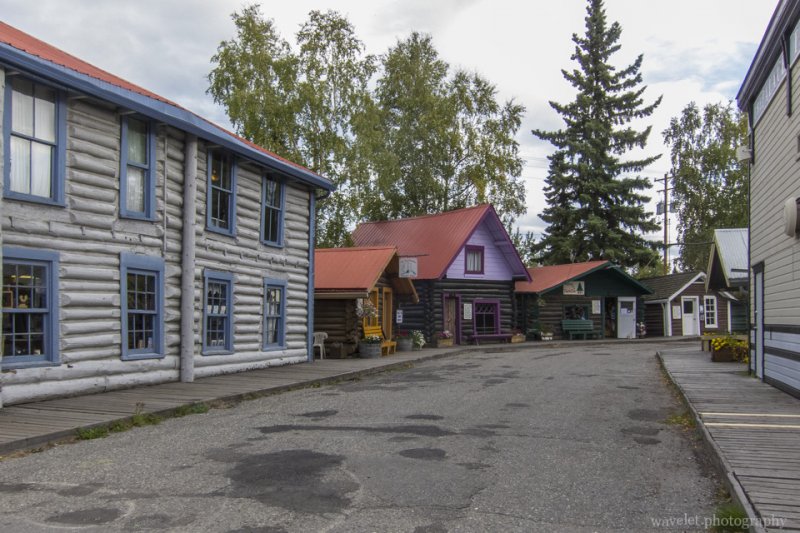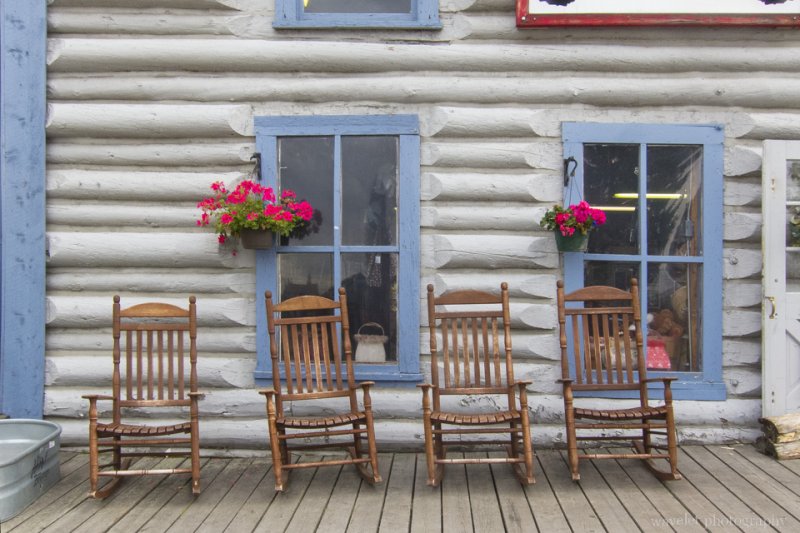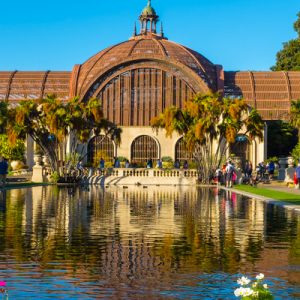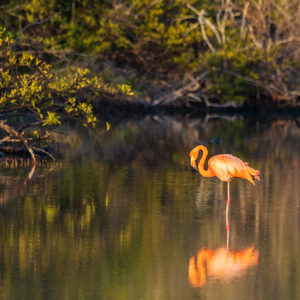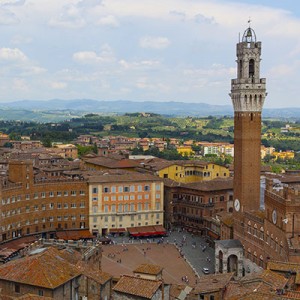2012.8.30Fairbanks is located in the Alaska Interior, half way between the Gulf of Alaska and Arctic Ocean. It’s second largest city of the state. At latitude of 64 degree north, Fairbanks’ summer sees long hours of sun light, but as it enters September, the daytime is shortened by an hour every week. The winter is long and cold. The temperature can often reach −30 °F. However, locals don’t see it as an inconvenience. They wear heavy coats with only T-shirts inside, so they can quickly adjust to the difference between the indoor and outdoor temperatures.
We came to Fairbanks with very little expectation to see Aurora – the northern lights. The auroral activity was only 1 or 2 for the two nights that we were there. Because Fairbanks is in the central of Tanana Valley, the sky is often cloudy in the night. It’s said that the chance is better if you drive north away from the city and up to the mountains. Some lodges there also offer the Aurora Viewing programs with hefty price. As I knew the chance was very low in September, other than opening the window to watch the sky from time to time, we didn’t do anything.
In the morning, we first went to the Trans-Alaska Pipeline visitor center, which is located only 10 miles north of Fairbanks. The pipeline is one of the largest projects of its kind. Although controversial, it’s truly a man-made wonder and solved many difficulties to deal with permafrost and earthquake faults to being financially and environmentally feasible.
We then went to see the Georgeson Botanical Garden. It’s a lovely garden with many species, which is specially challenging consider Fairbanks’ northern environment. The garden is within University of Alaska Fairbanks’ campus and serves as the field ground to study subarctic horticulture.
We drove back to the main campus of University of Alaska Fairbanks and walked around the Museum of North.
There are not many choices for restaurants in Fairbanks, but a Japanese Restaurant with a very plain appearance named Ajimi is one of the best.
Our first stop in the afternoon is Morris Thompson Cultural & Visitors Center located in the downtown. There were some informative displays and video here. It’s a good free “museum” to spend a hour or so. After that, we went to the Pioneer Park. It’s a park that was built to celebrate the 100th anniversary of the purchase of Alaska from Russia. Later, some old cabins were moved to the place and it has became a historic park that mimics a gold-rush town and demonstrates living environments of the early settlers.
